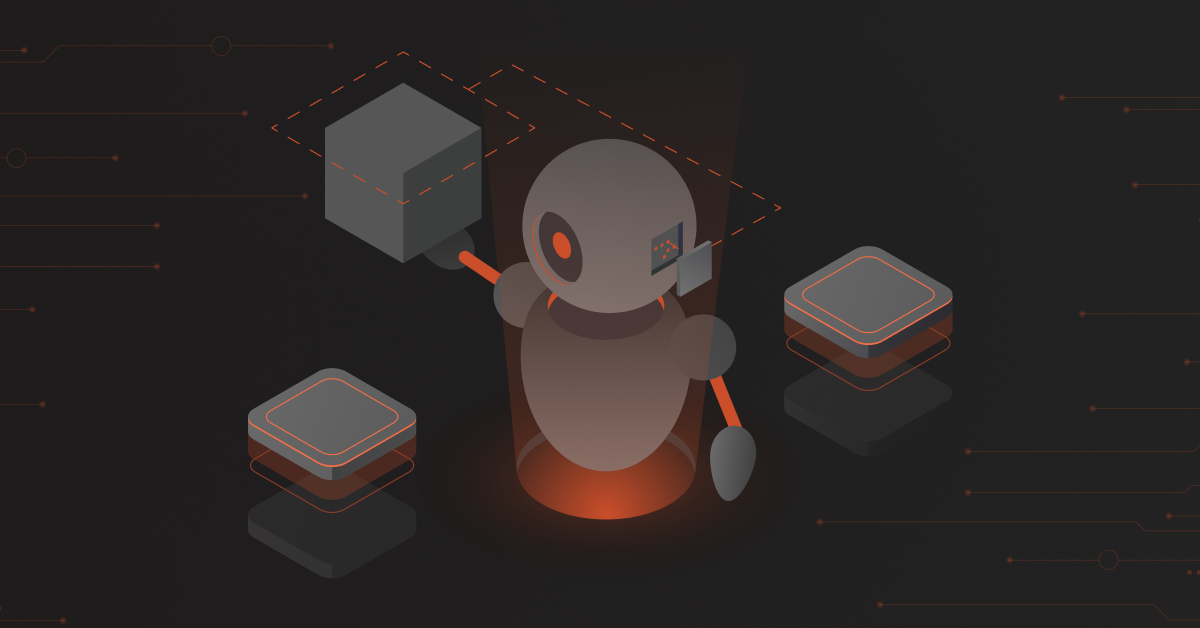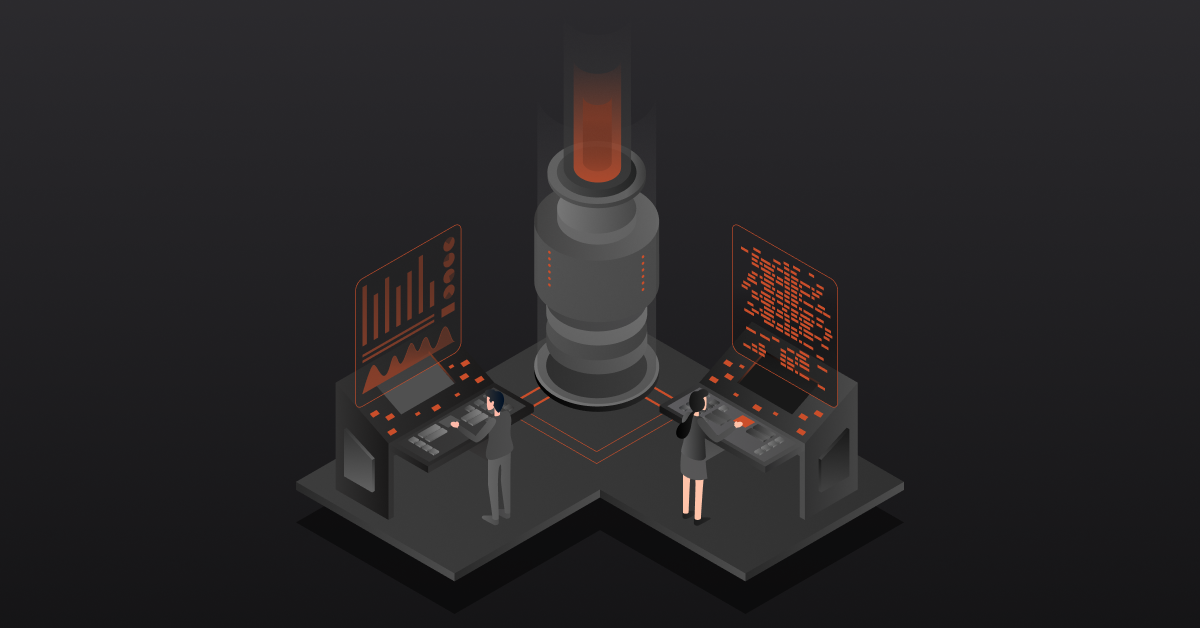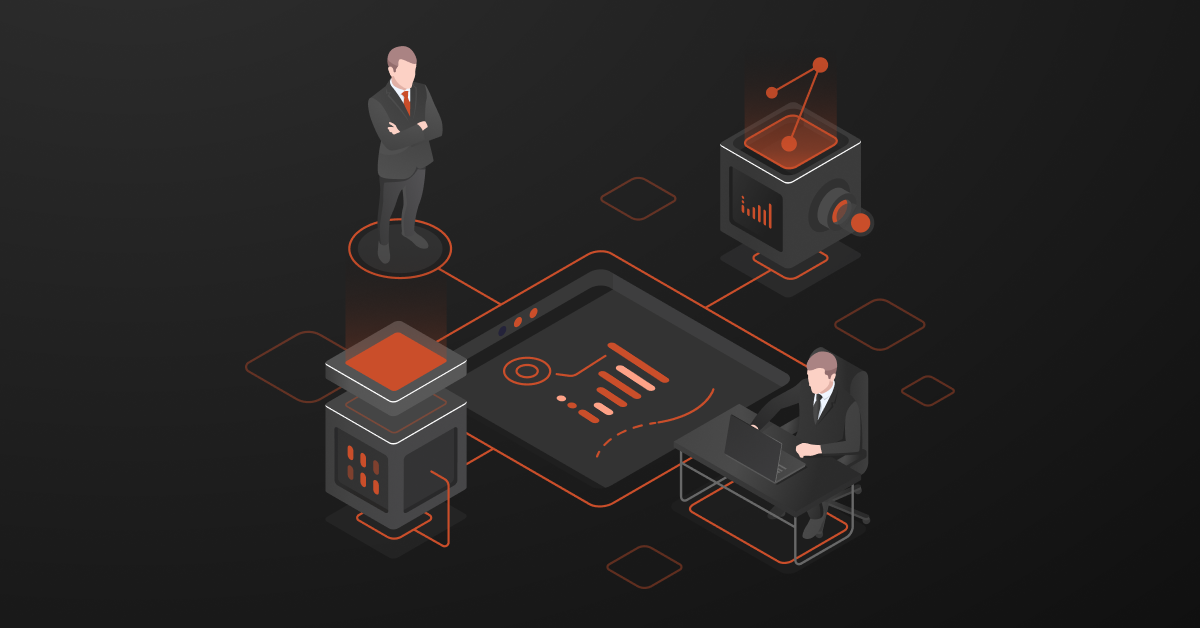AI in distribution is becoming more and more popular. AI-driven solutions are playing a huge role in improving productivity, simplifying procedures, and offering insightful data. This is helping distributors gain a competitive edge in a market that is changing constantly.
To stay ahead of the curve as a distribution leader or IT specialist, you must have a grasp of AI’s present implications. So, here’s what you should know.
Contents
How AI Helps Distributors
AI is a broad term and its role in logistics and distribution is always changing and growing, so it’s hard to cover everything at once. But here’s a rundown of what AI systems are up to right now.
Logistics Planning
Logistics for distributors involves coordinating and building relationships with suppliers, workers, and customers but here is what AI helps with:
- Demand Forecasting: It predicts how much stock warehouses will need, so they don’t have too much or too little, saving money.
- Supply Planning: Adopting AI ensures warehouses always have the necessary stock supply and reduces waste.
Autonomous Vehicles
These are self-driving vehicles that operate without any human intervention such as forklifts and drones. They save time and money by performing tasks independently.
Warehouse Automation
Many warehouses use AI-powered robots for tasks like sorting, picking, and storing packages, freeing up humans for more important work.
AI technology also plays a crucial role in improving the safety of warehouses. It facilitates more effective planning and efficient warehouse management, protecting both personnel and inventory.
Additionally, AI reports possible hazards in the warehouse and notify management of them through data analysis.
Data-Driven Analytics
AI helps warehouses make better decisions by looking at historical data and predicting future risks and opportunities. This helps you stay prepared for any unforeseen circumstances.
Transportation Optimization
AI finds the best delivery routes considering factors like traffic and weather, resulting in faster deliveries, happier customers and less fuel wasted.
Back-Office Operations
Businesses are already employing cognitive automation—a hybrid of AI and robotic process automation (RPA). Employees can increase productivity and accuracy in a range of behind-the-scenes tasks, including procurement and billing, thanks to this.
Overall, AI can take over multiple tasks for warehouses, making everything run smoother, cheaper, and more accurately.
Recommended reads: Understanding Digital Transformation in Logistics and Distribution
Benefits of Leveraging AI in Distribution
Human intelligence has its limits, but artificial intelligence is unstoppable. So, let’s check out the top benefits of AI in distribution businesses:
1. Great at detail-oriented tasks: AI is great at handling various tasks that need a lot of attention to detail, like sorting through a large amount of data and spotting patterns in complex information. With AI, you can trust that things will be done right the first time, with zero human errors.
2. Saves labor and boosts productivity: AI tools takes care of all the repetitive tasks such as manual data entry, freeing you up to focus on the more interesting parts of your job. It automates those boring, time-consuming tasks and always keeps you updated with real-time data.
3. Reduces time for data-intensive tasks: When most of the data-intensive tasks are handled by super-efficient artificial intelligence, you end up saving a lot of time. Speed and accuracy are the biggest plus points of AI that the industry must utilize.
4. Offers 24/7 availability: Unlike us humans who need breaks and sleep, AI-powered systems never need to hit the snooze button. The moment you need assistance, they are immediately available. For instance, AI systems can respond to questions from clients or watch over your company while you are not around
5. Delivers consistent results: One of the major strengths of AI is its ability to guarantee standard results without failure. In contrast, human beings differ in terms of performance levels because they are affected by things such as tiredness, mood swings, or even expertise levels which may make people behave out of order at times.
6. Increases employee safety: Safety is a common concern and AI helps with that. It makes workplaces safer by taking on dangerous tasks that could put human workers at risk. The widespread adoption of AI in the industrial sector is because it keeps human away from harm.
7. Improves customer satisfaction: By understanding your preferences and needs, it makes sure you get exactly what you want, whether it’s product recommendations or customer support. Additionally, it helps speed up the order fulfillment process encouraging customers to stay loyal in the long term.
8. Boosting sales: AI plays a significant role in boosting sales by providing advanced analytics, predictive insights, and automation capabilities through AI-powered sales applications. These valuable tools optimize the sales process, improve customer engagement, and drive revenue growth.
It supports the sales team by lead scoring, sales forecasting, customer segmentation, personalized recommendations, and sales performance analysis, among other use cases. They help businesses identify high-potential leads, prioritize sales opportunities, and deliver tailored solutions to customers.
Recommended reads: Understanding eCommerce Automation For Distributors
AI in Distribution – What Industry Leaders Have to Say
1. Mike Marks
Mike Marks, Founding Partner of Indian River Consulting Group and Senior Research Fellow at NAW, shares his insights on AI in distribution. He answers common questions about AI, defines it for beginners, and discusses its significant impact on the distribution industry.
Here’s a quick summary of the discussion
- Defining AI for beginners: Mike notes that although the term is popular, many people might not be familiar with it. He clarifies that rather than being something to be afraid of, artificial intelligence (AI) should be embraced as a technology that allows us to automate operations and processes and make them faster and more effective.
- Evolution of AI: Mike points out the use of AI since its early days with symbolic logic in ERP systems to modern applications like predictive analytics and automated decision-making. It is just more advanced now and is constantly evolving. He highlights the misconception that AI is solely about large language models like GPT-3, emphasizing that AI has been used in distribution for years but quite underutilized.
- Practical Applications of AI in Distribution: He shares instances of how AI can improve the operations of distribution centers’ by automating client communications according to preset guidelines. He describes how artificial intelligence (AI) may spot trends and set off events, including notifying sales representatives via email when a consumer exhibits a particular behavior.
- Challenges and Opportunities: Of course, AI implementation can be difficult. But Mike is optimistic and believes we can figure it out and make AI work even better for us.
2. IAN Heller
In a recent video of Driven by DCKAP, Ian Heller, Co-Founder & Chief Strategy Officer of Distribution Strategy Group discusses how AI is being used in various aspects of distribution and shares his insights on its potential impact.
Here’s a quick breakdown of his thoughts:
- AI in Working Capital Management: Ian spilled the beans on how AI is helping companies manage their working capital, especially when it comes to handling inventory. In the past, guessing how much inventory to keep was a bit like playing darts blindfolded. But thanks to AI, those guesses are getting a lot smarter.
- Recommendation Engine and Inventory Forecasting: He talked about how AI is like your personal help when it comes to figuring out what inventory you need and when you need it. It allows you to have the right amount of stock even in time of urgencies.
- AI in AR and Delivery Routing: He says, AI can also be applied to accounts receivable, helping businesses understand when to make phone calls or send emails to customers who owe money. It also helps in figuring out the most efficient delivery routes for trucks, optimizing delivery processes.
- AI in Warehouses: AI has found its significant place in warehouses where it monitors activities like whether drivers on forklifts are wearing seat belts correctly, detect fraud, and even use drones to count inventory.
- Potential of AI in Distribution: Ian believes AI has the potential to revolutionize distribution, even more so than in retail. While it’s still early days for AI in distribution, the buzz is getting louder. Companies are feeling the pressure to jump on the AI train, with everyone from board members to investors asking what they’re doing about it.
- Implementation of AI: Right now, it’s mainly the tech savvy people who are weaving AI into existing products or catching the eye of distribution companies. But there’s still a long road ahead before AI becomes a regular part of the distribution world.
Challenges of AI in Distribution
Scaling Up: One of the biggest challenges in implementing AI systems is usually obtaining a large number of initial users or systems. Knowing that every AI system is different, supply chain partners must have in-depth conversations with their AI service providers to determine the best course of action.
System Limits: In order to operate effectively, AI systems—which are typically cloud-based—need a lot of bandwidth. This implies that end users may need to spend money on expensive specialized hardware to access these systems.
Training Costs: Staff must be trained in order to implement AI properly, which requires both time and money. To create reasonably priced training programs that nonetheless deliver results, supply chain partners and AI providers will need to collaborate closely.
Operational Costs: AI models are made up of a network of separate processors, each of which needs updates and repair. When parts need to be replaced, there may be an increase in overhead and electricity expenses, making this a considerable recurring expense.
With the given challenges, if you think you are not quite ready to transform your entire business processes with AI, it is always a good idea to begin with automation. Automation can streamline numerous processes without directly involving AI, making it a more accessible option for businesses looking to enhance efficiency.
You can automate tasks such as inventory management, order processing, and customer data synchronization and save a lot of time and reduce errors in the operations. This initial automation phase lays the groundwork for more advanced technologies like AI, preparing businesses for future integration.
Automate Tasks with DCKAP Integrator
DCKAP Integrator is an integration and automation solution specifically made for distributors. It has multiple use cases from enhancing logistics, optimizing inventory levels, to automating customer service. The solution is backed by a team of AI experts and dedicated support staff that ensures a smooth implementation process and ongoing support.
Here’s what it can automate for you:
Workflow Automation
DCKAP Integrator can automate a variety of repetitive tasks and processes, including document routing, data input, and approval procedures. It simplifies things, cuts down on errors, and frees up significant time in your schedule.
eCommerce Automation
DCKAP Integrator helps ecommerce operations run more efficiently by carrying out certain tasks automatically: handling inventory records, processing orders, and synchronizing customer data. It works in perfect unison with widely used ecommerce platforms, making it possible for companies to set aside more hours for other activities and at the same time minimize the potential mistakes caused by non-automated data entries.
ERP (Enterprise Resource Planning) Automation
DCKAP Integrator is top-notch when it comes to enterprise resource planning. With ERP automation, it handles various business tasks like order processing, accounting, HR management, procurement, and inventory management. This automation gives real-time insights into how your business is doing, making decisions easier and operations smoother.
CRM (Customer Relationship Management)
DCKAP Integrator also helps manage customer-related tasks to improve satisfaction and loyalty. It takes care of things like managing leads, supporting customers, forecasting sales, and communicating with clients. By automating these tasks, businesses can better track interactions with customers, customize communication, and spot opportunities for growth.
Data Automation
The DCKAP Integrator is highly proficient in automating the processes of gathering, handling, and evaluating vast amounts of data. This covers activities including extracting data from several sources, transforming and cleaning data, and producing reports and insights. Data automation speeds up decision-making, lowers manual mistake rates, and improves data accuracy.
Visit this page to learn more about DCKAP Integrator and get a product preview.
FAQS
What are some innovative technologies transforming wholesale distribution?
Besides artificial intelligence (AI), there is also an electronic ledger commonly referred to as blockchain plus robotics, Internet of things(IoT) and augmented reality which have all been said to completely change this field. In addition, blockchain assures supply chain transparency while IoT sensors enable real-time inventory monitoring hence making it easier for firms to manage their inventory levels efficiently through automation using robot technology for warehousing tasks; whereas augmented reality has been shown to improve training as well as remote assistance possibilities. A few more examples of new technologies are
- Natural language processing (NLP) enables machines to understand, translate or even generate human languages and the technology can also support enterprises by extracting useful information from messy data.
- Voice-picking technology uses speech recognition to let warehouse employees confirm tasks and get directions verbally.
- Facial recognition technology, face verification and approval system are both widely used applications in terms of security. For instance, it helps in personalizing interactions and loyalty programs through facial recognition data as well as towards enhancing customer experiences.
- Another example is driverless car services deployment with independent movement, optimized route selection plus reaction to changes on site in real time. Because these services result in reduced transportation costs, they are among the most cost-effective methods for warehouses to run.
What are some best practices for implementing AI in distribution?
The best practices in AI application to distribution involve setting specific objectives, assessing data availability and quality, selecting appropriate providers and technology, conducting adequate training for employees and monitoring AI systems and algorithms continuously to ensure they are consistent with corporate goals.
What role does AI have in supply chain activities?
In supply chain management, artificial intelligence (AI), is utilizing its tools, like machine learning and predictive analytics to streamline operations, improve judgment, and save costs.
How does AI address consumer demand in distribution?
AI enables prediction and analysis of market movements hence informing the inventory levels in meeting consumer needs thus enrich the process in distribution. AI aids distributors to predict what customers would prefer and ensure they adapt to varying market situations through use of advanced analytics and deep learning algorithms so as to maintain customer requirements.
Additionally, it examines consumer behavior based on browsing patterns, demographic data, and past purchases. Distributors may use this information to better target their marketing campaigns, manage their inventories, and improve customer satisfaction.
What are the key benefits of AI in terms of ease of use?
AI assists users in interacting with complicated systems and making wise decisions through simplification of intricate activities, automation of business activities, and presentation of self-explanatory interfaces.




